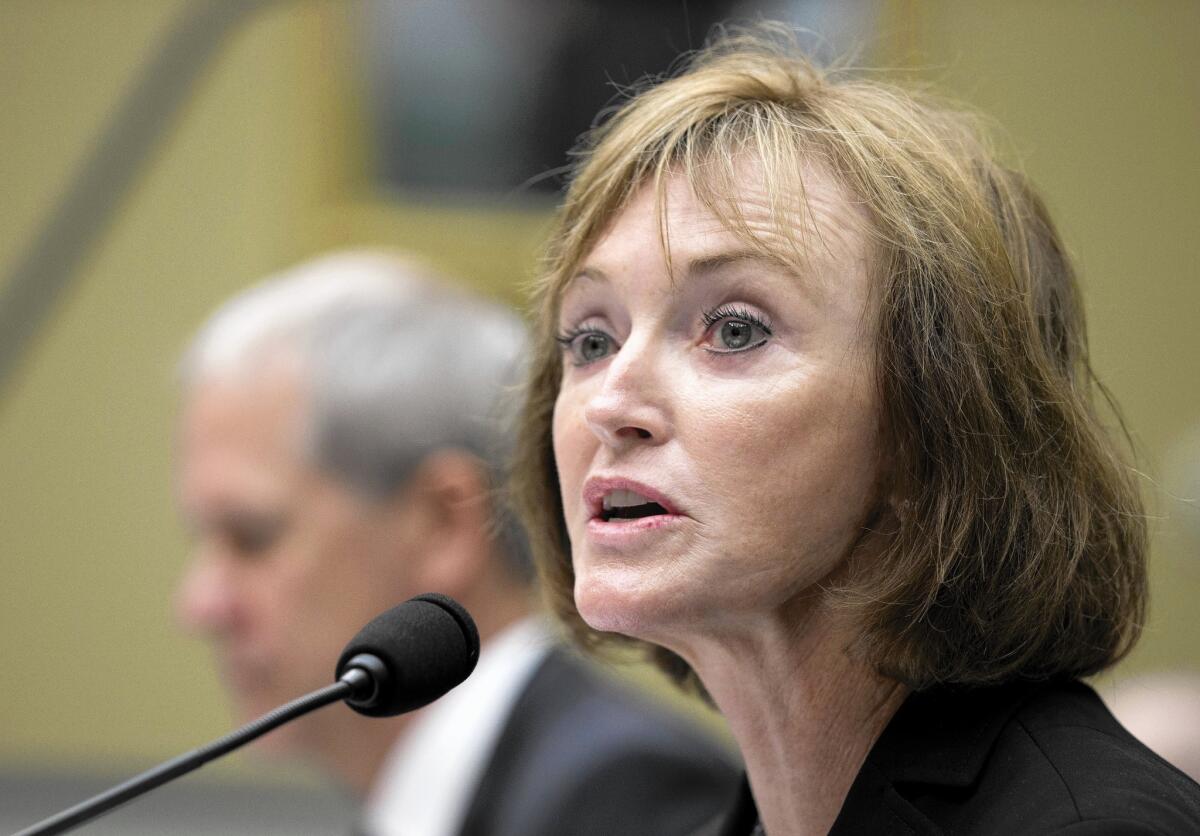Obamacare enrollment falls slightly to 7.3 million in August

- Share via
reporting from WASHINGTON — Enrollment in health plans offered through the Affordable Care Act dropped slightly through this year, falling from about 8 million this spring to 7.3 million in mid-August, the Obama administration announced Thursday.
The tally represents the first update the administration has provided since the April close of the open enrollment period.
It suggests that the vast majority of consumers who signed up for coverage this year stuck with it, contrary to warnings from critics of the health law that millions would stop paying their premiums.
Marilyn Tavenner, who as head of the federal Centers for Medicare and Medicaid Services oversees new insurance marketplaces created by the law, expressed satisfaction with the enrollment total.
“We are encouraged by the number of consumers who paid their premiums and continue to enroll,” she told a congressional panel.
The decline since April also offers a warning, however. Because the law’s long-term sustainability depends on millions more people signing up for health coverage in coming years, its supporters will have to reverse the erosion in coverage when the second sign-up period begins this fall.
“The challenge in the coming year will be signing up more people for coverage, especially reaching those who stayed on the sidelines this year,” said Larry Levitt, senior vice president at the nonprofit Kaiser Family Foundation, which has been closely tracking implementation of the law.
The law this year for the first time allowed Americans who don’t get health benefits at work to shop among plans on new marketplaces. Those making less than four times the federal poverty level — or about $94,000 for a family of four — qualify for subsidies.
The marketplaces were open for general enrollment from October into April.
But experts always believed that the enrollment total would fluctuate through the year, as was common in the old insurance market.
Consumers who did not sign up initially could still enroll later in the year if they lost a job, got divorced or had another change in circumstance that entitled them to sign up.
Other consumers were expected to drop out as they got other insurance through a new job or qualified for a government program such as Medicare or Medicaid.
The federal government has also been reviewing consumers’ eligibility through the year and moving to cut coverage for people who may not qualify because they do not meet immigration or other requirements.
Administration officials would not say Thursday how many people have been deemed ineligible. But officials warned this week that as many as 500,000 people could lose coverage this month or be asked to pay more because they did not provide adequate documentation.
Critics of the law have long suggested that the biggest challenge would be keeping consumers who signed up but didn’t pay.
Over the summer, the chief executives of Aetna and Cigna, two of the nation’s largest insurers, warned investors that the companies were seeing a decline in enrollment through the year.
But many other insurers say privately that their enrollment has held steady through the year or increased slightly.
“There was a myth that consumers would just stop paying,” said James Roosevelt Jr., CEO of Tufts Health Plan, one of the leading insurers in Massachusetts.
More to Read
Inside the business of entertainment
The Wide Shot brings you news, analysis and insights on everything from streaming wars to production — and what it all means for the future.
You may occasionally receive promotional content from the Los Angeles Times.











